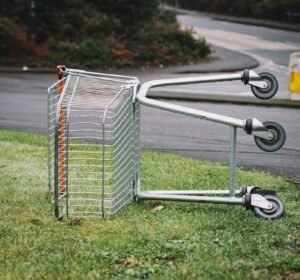The story of one bold NGO, a handful of smart ad campaigns, and what every small business can learn from it.
It started with a disaster. Literally.
In early 2022, a devastating earthquake rocked Afghanistan. IsraAID, a small but mighty humanitarian organization, mobilized immediately. They had the expertise. The team. The supplies.
What they didn’t have?
Visibility.
“We’re here,” they thought, “but how do we let the world know?”
If you’re a small business owner, a marketer, or someone trying to make a dent in a crowded digital world, you’ve probably felt that same frustration.
You know your offer could help people. You just need the right people to see it.
That’s where paid ads come in—not just as a tactic but as a lifeline.
The Invisible Brand Problem (Maybe You Know It, Too)
IsraAID had global reach, heart-centered work, and incredible impact—but their digital presence didn’t reflect it.
People couldn’t find them in search results. Their donation page was rarely visited. Awareness campaigns barely got off the ground.
So they partnered with us at Braven.
What Are Paid Ads, Really?
Let’s start with the basics. Paid advertising means promoting your business through digital platforms where you pay to show up—like Google, Facebook, Instagram, LinkedIn, and more.
They’re like a digital megaphone. You choose your message, your audience, your budget—and the platform helps deliver it straight to the right people.
You’ve likely seen them before:
|
Search Ads |
Social Media Ads (Meta, Instagram, LinkedIn, TikTok) |
Display Ads |
Video Ads (YouTube, TikTok) |
|
A Google search result with “Sponsored” next to it |
A product ad on your feed that feels creepily relevant |
A banner-style ad that shows up on websites or mobile apps |
A YouTube video that starts with a 5-second message |
|
Best for: Leads, bookings, high-intent traffic |
Best for: Engagement, awareness, retargeting |
Best for: Brand visibility and reaching wider audiences |
Best for: Storytelling, product demos, visual brands |
These are all paid-per-click ads, and when done right, they don’t just blend in—they convert.
In a nutshell, paid ads allow you to: can be made as visuals and add the link to contact us
✅ Appear in front of your audience exactly when they’re searching for what you offer
✅ Reach new markets fast—without waiting months for SEO
✅ Scale up or down based on budget and performance
✅ Target specific demographics, locations, behaviors, and more
✅ Get clear data to track what’s working (and fix what’s not)
What Makes Paid Ads Work? (Hint: It’s Not Just the Budget)
Let’s break down what made IsraAID’s campaigns take off—and what your small business can copy today if you’re asking, “Why are my ads not converting?”:
1. Know What Winning Looks Like
Before we touched a single headline or keyword, we asked one question: “What does success look like for you?”
For IsraAID, it was:
- More donations
- More volunteer signups
- More awareness in countries where they were active
That’s where so many small businesses slip. They boost a post and hope for “more views.” But paid ads need clear conversion goals—calls, form submissions, sales, foot traffic. Otherwise, it’s like throwing darts in the dark.
Tip: Define your goal before you define your ad.
2. Keywords Aren’t Just Buzzwords
In the early campaigns, IsraAID’s ads were showing up for some pretty odd searches. Think: “disaster news today” or “help for refugees.”
Important searches? Yes. But not from people ready to donate or volunteer.
That’s when we realized that the wrong keywords were eating up the budget. Like throwing a party and having all the wrong guests show up.
So we scrubbed the list. We only kept words that matched the mission—and the mindset—of someone ready to take action. And added a strong negative keyword list to weed out the irrelevant clicks. We also layered in:
- Exact match for high-intent phrases like “donate to earthquake relief”
- Phrase match to capture variations like “disaster donation Afghanistan”
- Broad match modifiers to widen the net just enough—but not too much
The result? A massive boost in qualified traffic and way less wasted spend.
Story takeaway: The right keywords don’t just bring traffic. They bring the right traffic.
Want your mission discovered like IsraAID?
→ Let’s talk about your paid ads strategy
3. Organized Ads Win Cheaper Clicks
Have you ever walked into a store where they’re selling shoes, candles, vitamins, and tacos all in one aisle?
That’s what IsraAID’s ad structure felt like. Everything was jumbled together—donate here, volunteer there, learn more over here.
It was confusing. For users. For Google. For results.
So we broke things down.
One ad group only focused on donations. Another just spoke to potential volunteers. And the rest on brand awareness. Each message matched the moment a person was in.
Kind of like a barista who asks, “Are you in the mood for coffee or tea today?” and then points you exactly where to go.
Simple. Smooth. And suddenly? Conversions started flowing in.
Moral of the story: Keep your ad groups themed and focused. Don’t mix apples, oranges, and bananas in one basket.
4. Track Everything (No, Really, Everything)
What good is an ad if you can’t tell what it’s doing?
We set up Google Tag Manager to track form submissions, donation completions, and button clicks. Then, we connected everything to Google Analytics so IsraAID could see the full journey—from ad impression to donation confirmation.
Without this, it’s like running a billboard on a highway and never knowing if anyone walked into your store.
Pro Tip: Don’t skip the setup. Every click should be traceable to a result.
5. Smart Budgets Need Smart Eyes
At first, IsraAID was doing what a lot of small teams do. They’d launch a campaign… and hope it worked.
No shame in that—we’ve all been there.
But ads aren’t crockpots. They’re more like houseplants. If you ignore them, they wilt.
We started checking in weekly. Tweaking headlines. Swapping out underperforming images. Adjusting bids so ads showed at better times of day.
And it paid off—literally.
More impressions. More clicks. Better ROI.
The real magic: Treat your ads like your best salesperson—always coaching, always optimizing. Always test 2-3 versions. Track performance weekly. Adjust based on real data.
Let’s Turn Ads Into Action
→ Grow Your Business with Paid Ads
The Results: A Huge Increase in Exposure and Conversion
The results after applying these paid advertising strategies speak for themselves:
🚀 95.8% optimization score
🙌 45% increase in donations
🌍 25% increase in volunteer applications
📢 Brand visibility in 55 countries
That’s the power of smart, well-optimized paid ads.
How Paid Ads Work With Small Budgets
You might be thinking, “Cool for NGOs, but I sell jewelry / do taxes / run a gym.”
Here’s the truth:
Paid ads aren’t just for nonprofits or big companies. They’re for anyone who wants to reach the right people fast.
Even $5 a day can get your message in front of hundreds—sometimes thousands—of potential customers.
It’s not about spending more. It’s about spending smarter.
When to DIY vs. When to Call Braven
You can absolutely start on your own. Platforms like Google Ads and Meta Ads Manager are user-friendly (ish).
But when your time is stretched thin or you’re ready to scale, that’s where we come in.
At Braven, we specialize in creating, launching, and optimizing ad campaigns that work across borders, budgets, and industries. From local coffee shops to international nonprofits, we’ve helped brands make their ads count.
So whether you’re launching a product, promoting a cause, or trying to bring in more local foot traffic…
We’ll help you turn your vision into visibility.




